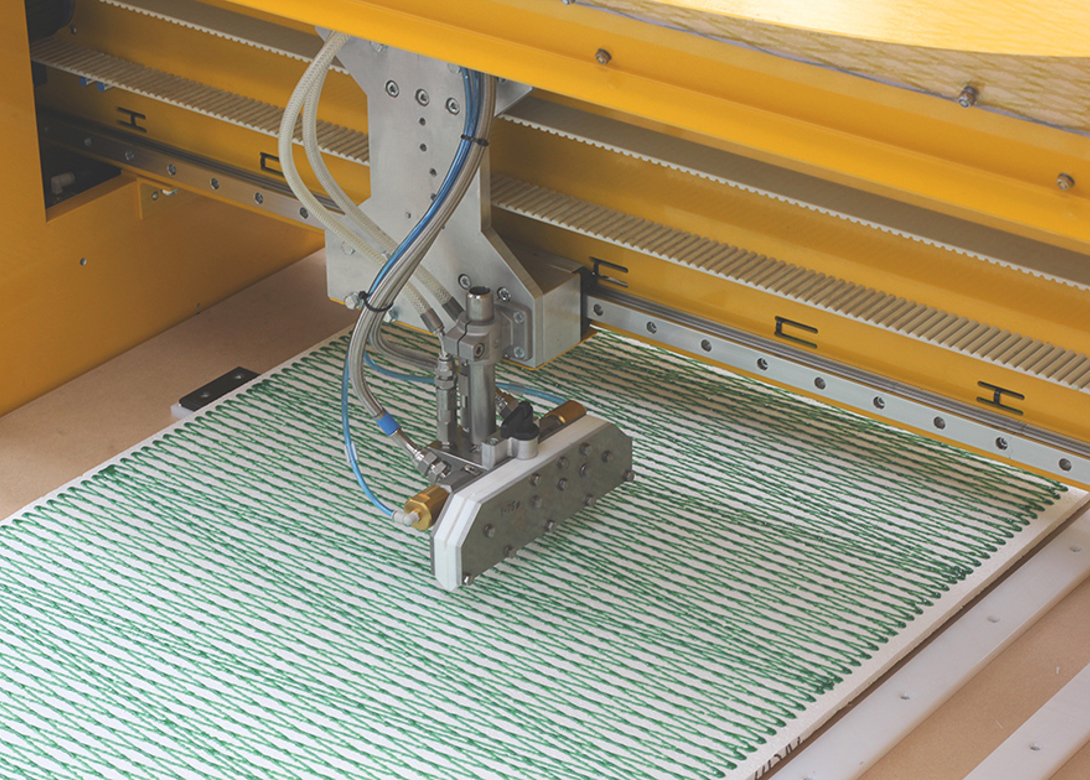
Here, Chemique Adhesives looks at why polyurethane adhesives are a popular choice in many industries as they can be formulated to provide a range of physical properties such as viscosity and adhesion to many different substrates as well as application properties, such as pot life and cure times.
Polyurethane systems used for adhesives can be separated into two main classifications, 1K (one part) and 2K (two part) systems, which share many similarities. All polyurethane adhesives use the same fundamental chemical reaction, this being a reaction between an isocyanate and a polyol. For two part systems the isocyanate and the polyol will be manufactured and supplied as separate components. For the chemical reaction to take place and fully crosslink, just prior to application, the components must be combined in the correct ratio with sufficient mixing.
For a one part system, water needs to be present to crosslink and this can be from moisture in the atmosphere; however, for some adhesives this will be from the application of a water mist prior to the addition of the second substrate being bonded.
Advantages of PU adhesives
There are many advantages to polyurethane adhesives and these include the following:
- Excellent adhesion to a wide range of substrates
- Cure time and pot life can be varied by formulation changes
- Good flexibility can be achieved in the cured product
- Non-flammable
- Good resistance to solvents when cured
- Application methods include roller, bead or spray, by manual or automatic systems
- Although they can be solvent borne, they can also be supplied solvent-free
- Heat is not required for cure, but can be used to speed up the process once both substrates are present
- Remain bonded through a wide range of operating temperatures
Of course, there are differences between one and two part systems and some of the advantages of a one component adhesive are that they are easy to apply as no mixing is required, they offer excellent chemical resistance and can either be solvented or solvent-free depending on the application required.
Two part systems generally have a longer shelf life than one part polyurethane adhesives and cure time is more dependent on the formulation rather than ambient conditions. As well as this, no additional processes (e.g., water-misting) are required after application of the adhesive.
Most substrates that bond with a one part system will also adhere with a two part system and vice versa. Consequently, the choice of whether a user chooses a one part, or a two part adhesive is best made by considering advice from the adhesive manufacturer and knowing the advantages and limitations of each system for a specific application.
Two part systems are guaranteed to achieve full through-cure in a specified time, but the two components will need to be properly mixed in the correct ratio, whereas a one part system may be easier to apply and require no mixing, but could require water-misting, and the cure time will be more affected by ambient conditions. Therefore, how the user wishes to apply the adhesive and any time constraints will influence which system to use.
Applications
Polyurethane adhesives from Chemique have been formulated to provide specific bonding properties, for example, grades are available for bonding substrates where more flexibility is necessary, right through to formulations where a harder bond line is required.
Polyurethane adhesives can be used to bond a wide variety of substrates, including metal, plastic, wood, foam and is a popular choice for panel bonding applications, particularly for the manufacture of composite panels, including aluminium honeycomb panels, truck panels, cladding, SIPs panels and insulation.
The Solfre range of laminating adhesives includes several controlled open time and cure rates to suit a variety of bonding processes.

Having spent a decade in the fastener industry experiencing every facet – from steel mills, fastener manufacturers, wholesalers, distributors, as well as machinery builders and plating + coating companies, Claire has developed an in-depth knowledge of all things fasteners.
Alongside visiting numerous companies, exhibitions and conferences around the world, Claire has also interviewed high profile figures – focusing on key topics impacting the sector and making sure readers stay up to date with the latest developments within the industry.





